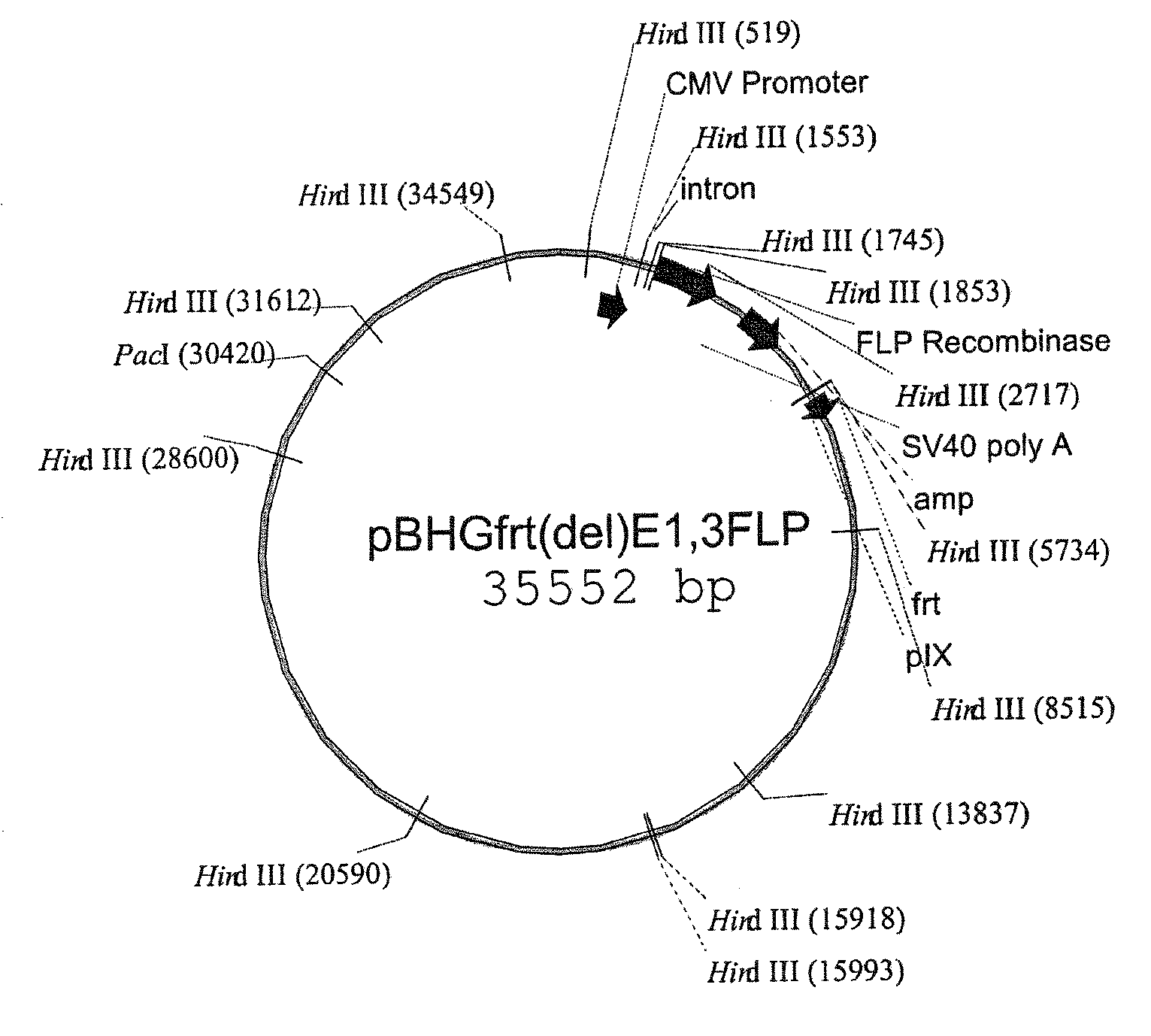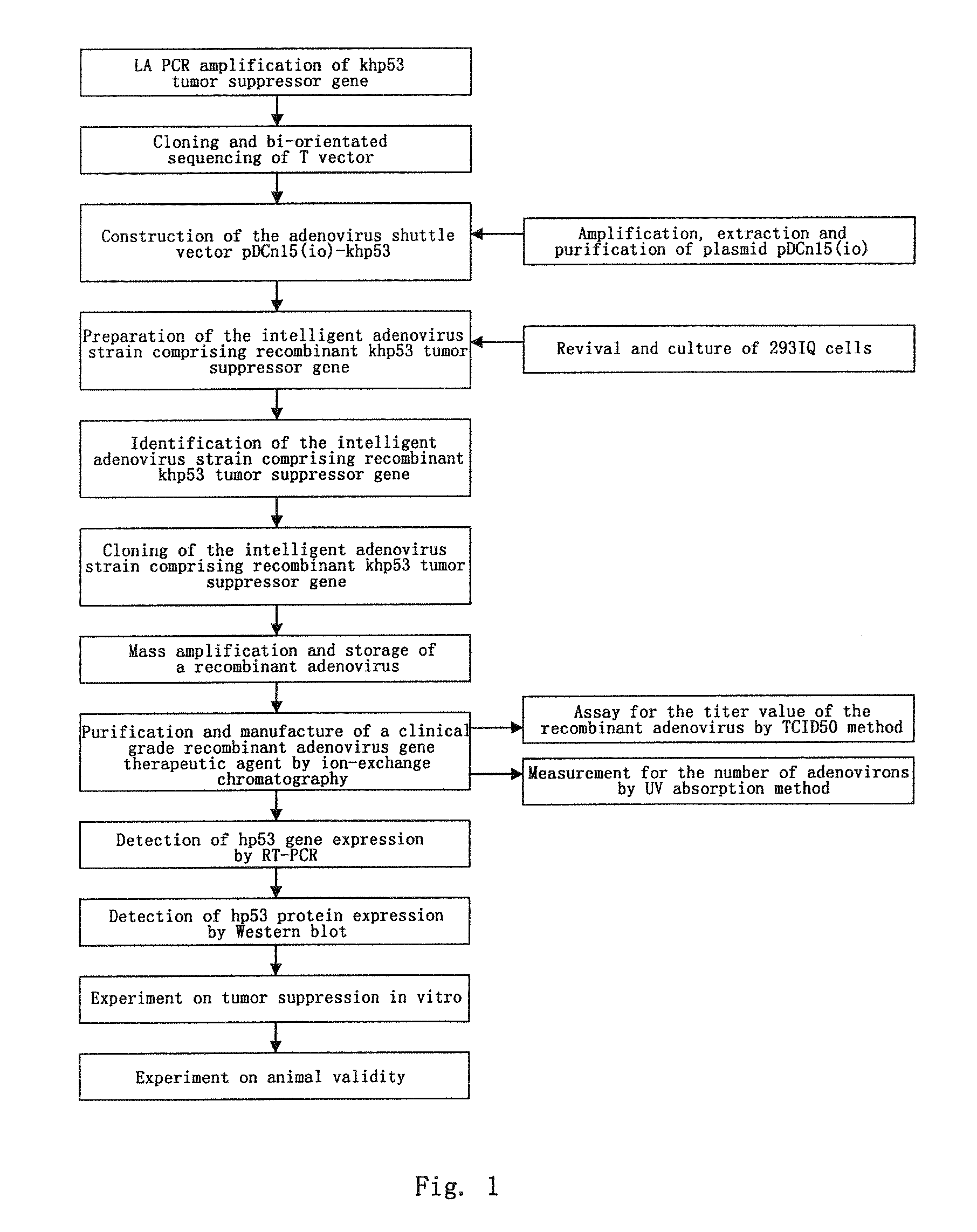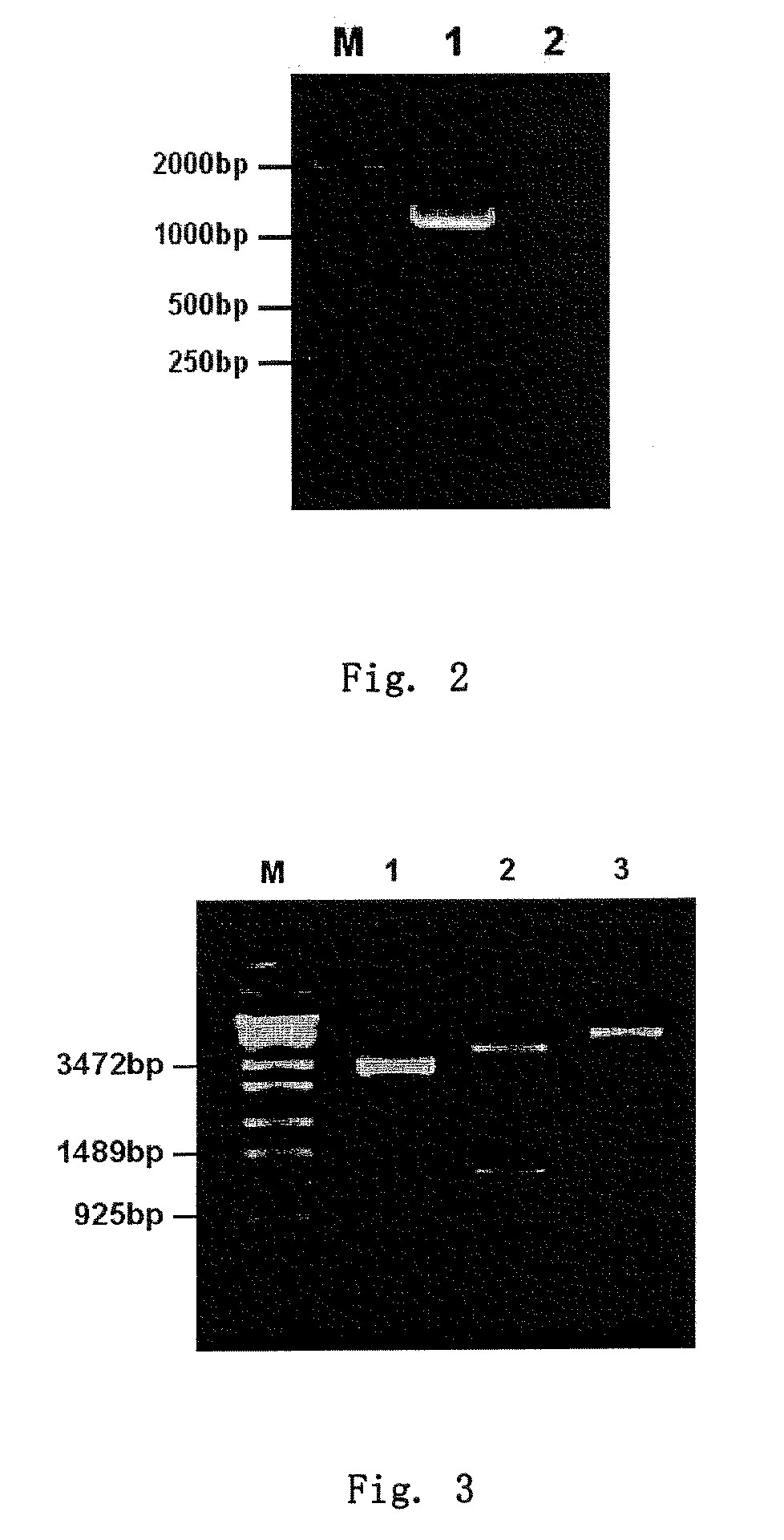RECOMBINANT ADENOVIRUS COMPRISING RECOMBINANT khp53 GENE AND THE PREPARATION METHOD AND USES THEREOF
a technology of khp53 and adenovirus, which is applied in the field of recombinant adenovirus vector for human tumor suppressor gene, can solve the problems of difficult to create a recombinant adenoviron with transfective activity, affecting human health dramatically, and bringing significant mental and physical harm to patients, etc., to achieve effective expression and stable expression
- Summary
- Abstract
- Description
- Claims
- Application Information
AI Technical Summary
Benefits of technology
Problems solved by technology
Method used
Image
Examples
example 1
Construction of the Adenovirus Recombinant Comprising Recombinant khp53 Tumor Suppressor Gene
[0060]1) Obtaining Human p53 Tumor Suppressor Gene Coding Sequence Carrying a Kozak Sequence (Shorten as khp53):
[0061]Two primers were designed according to the published human wild-type p53 cDNA full sequence (SEQ ID No:3): a upstream primer 5′-ATA GGATCC A CCATGG AGG AGC CGC AGT C 3′ (SEQ ID NO:1) and a downstream primer 5′-ATA GGATCC ATG TCA GTC TGA GTC AG 3′ (SEQ ID NO:2). The BamHI digestion site GGATCC and the digestion protective bases ATA were inserted into both primers. The base A was inserted behind the BamHI digestion site GGATCC of the upstream primer, which is followed by the sequence CCATGG AGG AGC CGC AGT C. In this way, the Kozak sequence CCACCATGG (SEQ ID NO:4) is constructed using the bases CC in the BamHI digestion site GGATCC, the base A and an implicit sequence CCATGG of human p53 cDNA. Human p53 tumor suppressor gene coding region was amplified by a PCR reaction, wherei...
example 2
Identification, Cloning, Mass Amplification and Purification of the Adenovirus Comprising Recombinant khp53 Tumor Suppressor Gene for Manufacturing a Clinical Grade Therapeutic Agent
[0065]1) Identification of the Adenovirus Comprising Recombinant khp53 Tumor Suppressor Gene:
[0066]A PCR reaction was carried out to amplify the template prepared by thermal cleavage of recombinant adenovirus, wherein an upstream primer 5′-TCG TTT CTC AGC AGC TGT TG 3′ (SEQ ID NO:9) and a downstream primer 5′-CAT CTG AAC TCA AAG CGT GG 3′ (SEQ ID NO:10) were used; the reactive conditions included: i) denaturalization at 94° C. for 2 min, ii) denaturalization at 94° C. for 30 sec, iii) annealing at 55° C. for 30 sec, iv) extension at 72° C. for 40 sec, v) repeating ii)-iv) for 30 cycles, vi) extension at 72° C. for 5 min, vii) storing at 4° C. If an Ad5 genomic specific fragment (11-13.4 mu, 860 bp) was amplified, the resultant virus described above was identified as a type 5 adenovirus. The 277 bp specif...
example 3
Assay for the Titer Value of a Recombinant Adenovirus Comprising Recombinant khp53 Tumor Suppressor Gene, Measurement for the Number of Adenovirons, and Analysis of Gene Expression in Human Malignant Tumor Cells
1) Assay for the Titer Value of Recombinant Adenovirus by TCID50 Method:
[0070]A suspension of 293IQ cells with a concentration of 1×105 cells / ml was prepared with MEM medium. A 96-well plate was inoculated with the suspension, 100 μl / well. The diluted virus solution was prepared by being diluted in a 10 time series, and utilized to transfect 293IQ cells, respectively. For each row, 100 μl of the diluted virus solution with the same concentration was added into the first 10 wells respectively; and the same volume of MEM containing 2% BCS was added into the 11th and 12th wells at the same row respectively, as negative controls. After cultured at 37° C. in a CO2 incubator for 10 days, the cells were observed under an inverted microscope and the CPE status was evaluated and recor...
PUM
| Property | Measurement | Unit |
|---|---|---|
| length | aaaaa | aaaaa |
| diameter | aaaaa | aaaaa |
| volume | aaaaa | aaaaa |
Abstract
Description
Claims
Application Information
 Login to View More
Login to View More - R&D
- Intellectual Property
- Life Sciences
- Materials
- Tech Scout
- Unparalleled Data Quality
- Higher Quality Content
- 60% Fewer Hallucinations
Browse by: Latest US Patents, China's latest patents, Technical Efficacy Thesaurus, Application Domain, Technology Topic, Popular Technical Reports.
© 2025 PatSnap. All rights reserved.Legal|Privacy policy|Modern Slavery Act Transparency Statement|Sitemap|About US| Contact US: help@patsnap.com



